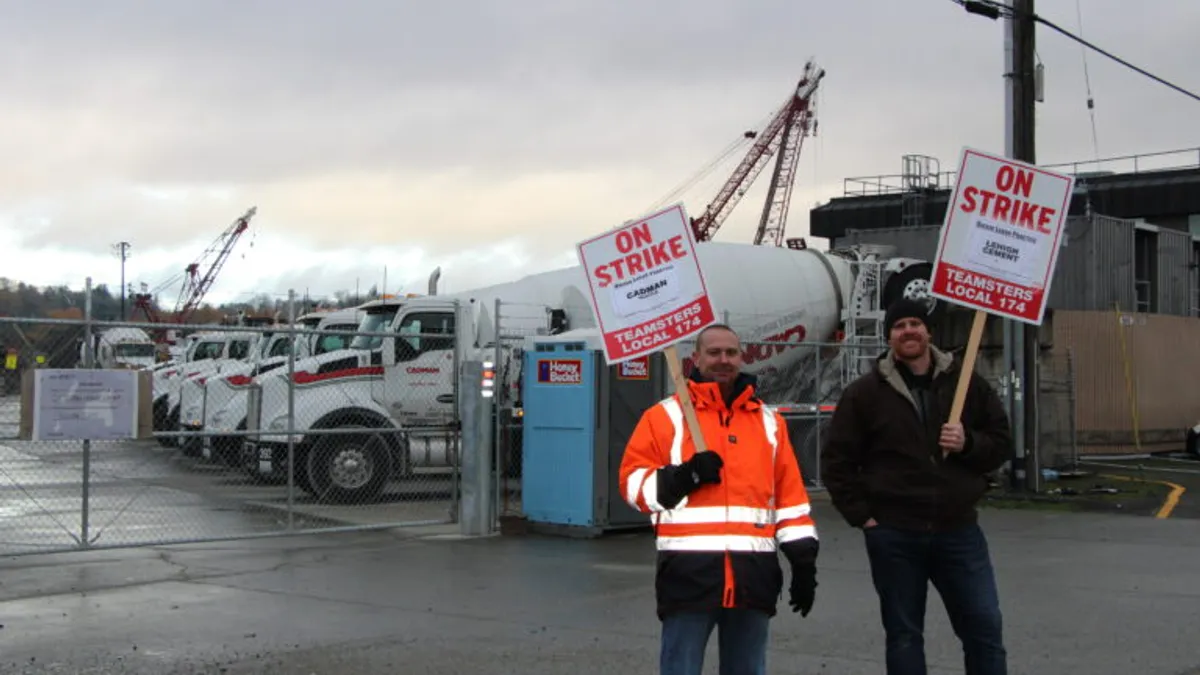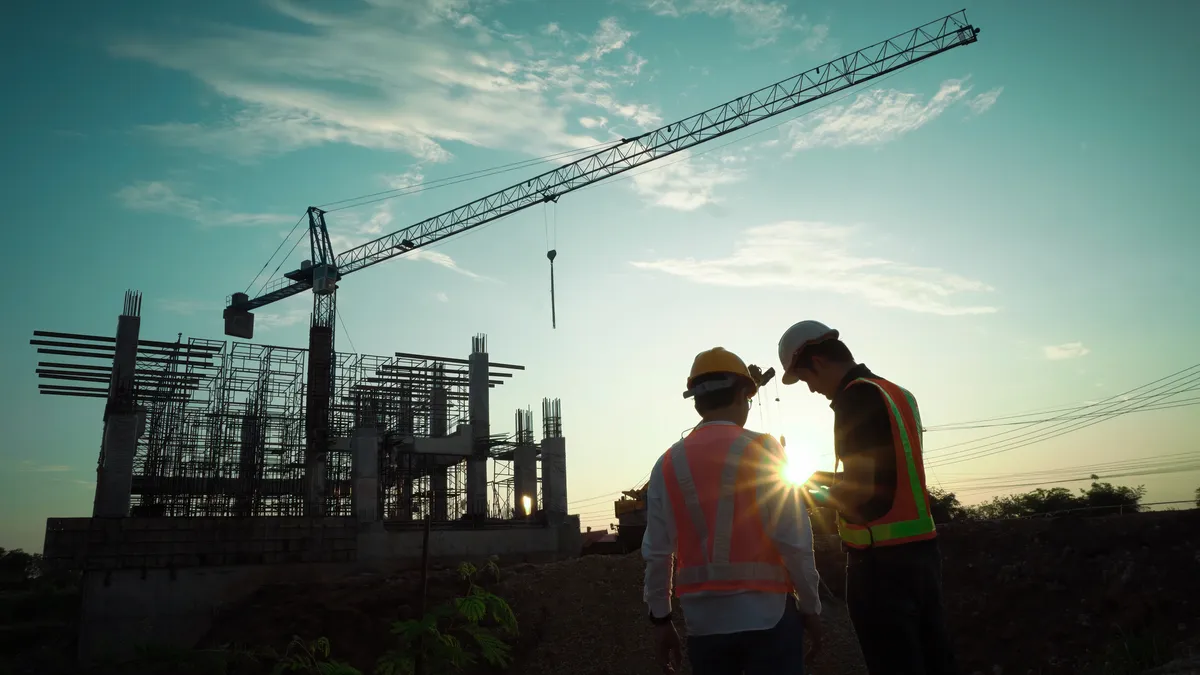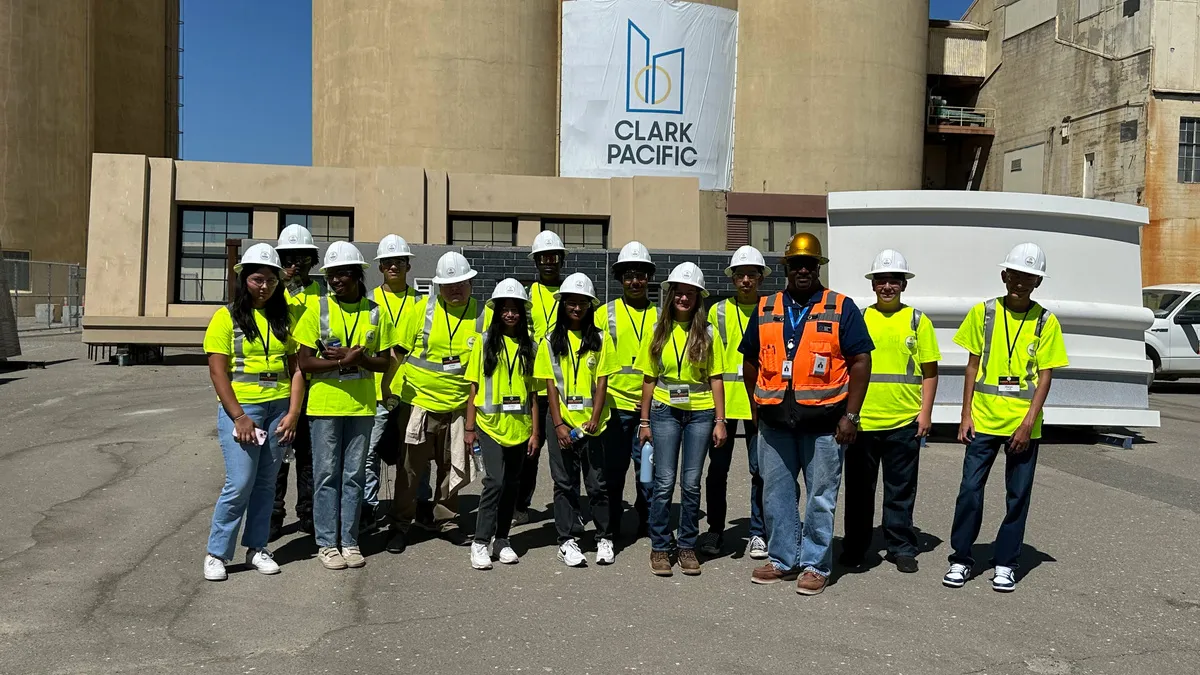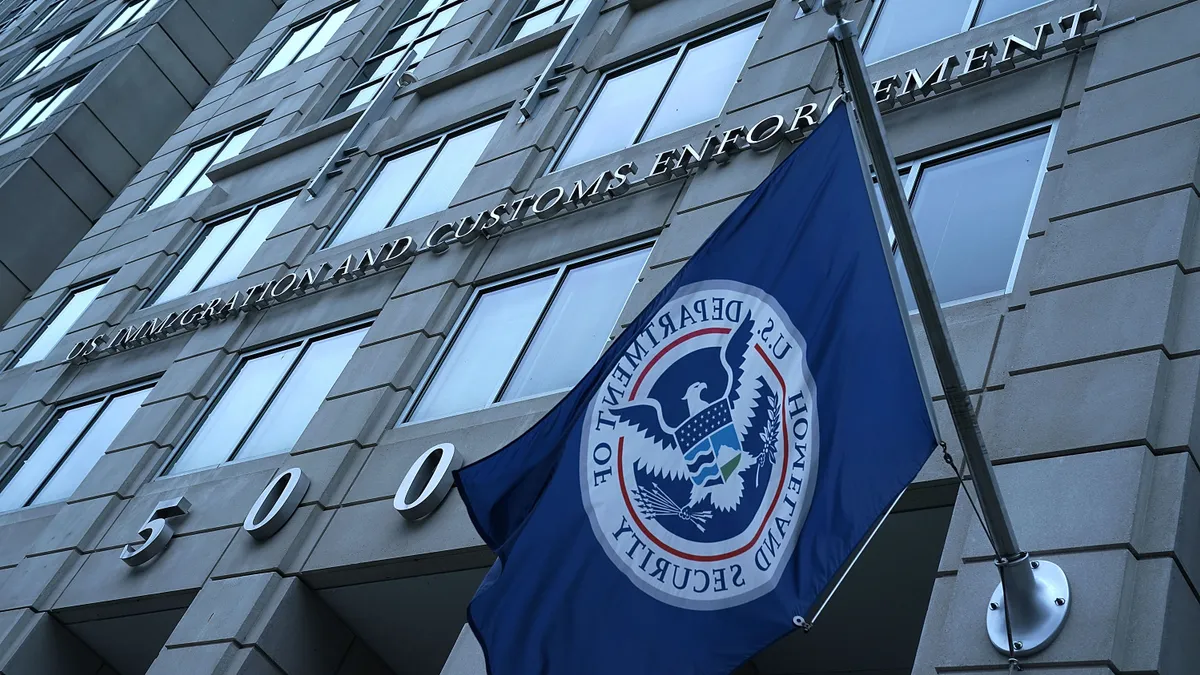One hundred forty one days of striking didn’t lead to the members of the Teamsters Local 174 securing a new contract. Nevertheless, on April 8, the Seattle-area concrete truck drivers agreed to return to work.
The circumstances that led to the strike, and its resolution without a significant gain for the union, provide insight into the state of organized labor in construction and the broader business landscape today.
For Andrew Elrod, a researcher at United Teachers Los Angeles, a union representing staff of the Los Angeles Unified School District, there's a simple reason why the Teamsters didn't gain more.
“You can’t strike for that long,” Elrod said.
Workers’ wages either take a dip during a strike, if the union provides them with funds to maintain work stoppages, or workers go without pay. Either way, time can create anxiety and stress on those striking and the surrounding city.
“I’m not surprised that it’s over just because of the duration,” said Elrod, who holds a Ph.D. from the University of California, Santa Barbara, where he wrote a dissertation on the history of wage and price controls in the U.S. during the mid 20th century.
The Teamsters strike was largely unprecedented in its length. Elrod pointed to a 1946 United Auto Workers strike that lasted 113 days. Even at a time when strikes were more common and unions wielded more strength, the timeframe was seen as absurdly long, Elrod said.
The Teamsters strike was also unique, sources told Construction Dive, because of the impact of missed concrete deliveries on the construction project cycle. It affected employers, but also many other businesses and workers across the city and across industries, so there was pressure on the Teamsters to return to work from more than just concrete suppliers.
Indeed, a strike of this scale impacts work even after its resolution: projects in Seattle continue to push back their expected completion dates because of delayed concrete deliveries.
The Seattle strike's broader context
It’s a pivotal time for organized labor in the U.S. One Amazon warehouse in Staten Island, New York, voted to unionize during the Seattle strike, though another recently voted not to. Starbucks outlets across the country have voted to unionize at specific stores.
On the construction front, a chapter of the International Union of Painters and Allied Trades in Kansas City, Missouri, stopped work for eight days before they negotiated a pay raise.
Monday, the Carpenters’ District Council of Ontario, United Brotherhood of Carpenters and Jointers began to walk the line, a decision impacting around 15,000 workers in the province, the Ottawa Citizen reported. They join the crane and heavy equipment operators from International Union of Operating Engineers Local 793, who seek a larger wage increase.
It was against that backdrop that the Seattle strike began in November, when 34 workers from Stoneway Concrete, part of Gary Merlino Construction, walked off the job, seeking better pay and improved healthcare benefits for retirees.
A month later, the number of striking concrete truck drivers swelled to 330, as workers from CalPortland/Glacier Northwest, Cadman Materials, Salmon Bay Sand & Gravel and Lehigh Cement joined in support.
The work stoppage strangled the flow of concrete to the city, including to important projects like the cracked West Seattle Bridge, a major artery through the city. If the number of trucks that missed deliveries had lined up, the queue would have stretched 32 miles, Sound Transit found.
Winners or losers?
One hundred forty one days of striking with no new contract is tough to spin as a win for the Teamsters.
“On the face of it, striking for over 140 days and returning to work without a contract is hard to imagine as a victory,” said Jeff Grabelsky, co-director of the National Labor Leadership Institute at Cornell University. “But what the longer-term impact of the strike may be and how it influences both ongoing and future negotiations is difficult to know.”
Some unionists may consider a long-term strategic view, such as if the union built a capacity and “muscles” to engage in more effective conflicts, or if it altered the balance of power, indicating to the employers that the strike was credible, Grabelsky said.
According to John Logan, professor and director of Labor and Employment Studies at San Francisco State University, it’s always a question of which type of pressure is sufficient to achieve the union’s goal. If a work stoppage succeeds, such as it did for the Kansas City IUPAT, then it’s a viable method.
Logan said the outcome in Seattle was obviously not what the Teamsters wanted, and therefore the decision to return to work was strategic. As time goes on, Logan said, it’s increasingly unlikely a union gets what it’s looking for from a strike. Others labor watchers agree.
“A strike of that length and that amount of time is sort of a failure for everyone,” said Dan Rosenberg, principal attorney at Chicago-based law firm Much Shelist who focuses on labor law. “The people that maybe lose most of all are the [Teamsters] union members. Imagine going 135 days without a paycheck.”
The strike hit the pockets of workers, companies, project owners, the government and private citizens who now have to wait longer for public projects like the bridge to be completed.
Rosenberg added that other trades workers “absolutely” impacted the strike ending as well.
A long strike with an enormous impact slows jobs and pay for fellow trades workers, which eventually can add more pressure on the union, even if the strike was supported initially.
But even then, the reason that the strike had such a ripple effect was because of the power the union wielded in stopping the flow of concrete, Elrod pointed out, a result that has a larger impact footprint than Starbucks workers unionizing.
Even if the union didn’t win, it certainly showed the power it wielded.
“They probably cost the employers, you know, X million dollars,” Elrod said. “That’s not nothing.”
Forward momentum
Over the past several decades, the number of strikes in general has steadily declined. The number of union workers has fallen as well, to just 10.3% of the workforce. In construction, 12.6% of workers belong to unions, though those numbers have dropped steadily as well.
Despite that drop off, organized labor today has growing support today.
The Biden administration, for example, has made its pro-labor stance clear. In February, President Joe Biden wielded his executive power to mandate project labor agreements on infrastructure projects receiving money directly from the government.
So the power the Teamsters wielded by stopping concrete deliveries in Seattle won't go unnoticed. Nevertheless, experts don’t expect strikes to shut down work regularly from here on.
“The reality is, the reason strikes have fallen into such historic low levels is that strikes still involve a critical amount of risk for the workers,” Logan said.
As support for organized labor rebounds, Rosenberg said he thinks that the key to working with unions properly is striking a mutually beneficial partnership, especially if union membership grows. Even then, unions must act in their members' own best interests, Rosenberg said, regularly negotiating new contracts and improving pay and benefits, so they're prepared when the inflation or recession arrives.
“My general view is too many people see the union as the enemy,” he told Construction Dive. “If you approach it that way, it’s going to be a loser.”


















